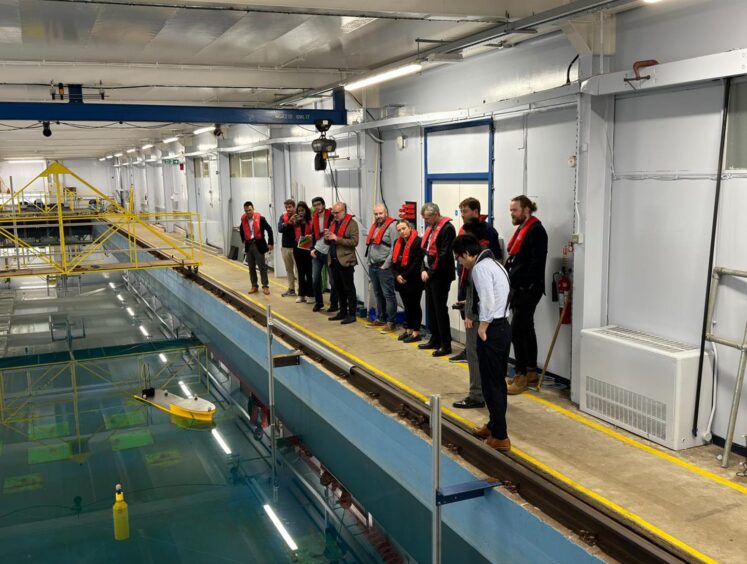
A Banchory-based firm has developed technology which it says could “revolutionise” the way offshore vessels are fuelled.
Oasis Marine has developed solutions for offshore hydrogen bunkering, thought to be a first for the industry, as well as electric charging via their specialised mooring buoys.
The system, trialled at the Kelvin Hydronamic Lab in Glasgow, showed the system could be connected to offshore windfarms for vessels to fuel up in-situ.
Green hydrogen has been mooted as means of storing excess power from giant offshore wind farms, with potential export potential to European markets.
It comes as maritime emissions make up around 3% of all CO2 worldwide, according to some estimates.
The Oasis Hydrogen Buoy will be able to transfer green hydrogen produced by offshore wind farms, potentially becoming part of an offshore hydrogen highway, whereby hydrogen is stored at an offshore location before being transferred by buoy to vessels transporting hydrogen or using it as their fuel source.
Oasis Marine’s Hydrogen Buoy and Power Buoy systems have been granted Scottish Government funding for their development.
O.S Energy, an offshore services firm with a 20-year record working on offshore wind and research projects, said the tech will give its decarbonisation journey a boost.
One of its vessels is being retrofitted for hydrogen use and a model of the ship was used during the demonstration and tank tests.
Managing director Martin Neurenberg said: “The development and validation of technologies like the hydrogen buoy will enable our vessels to transition to cleaner alternative fuels and have significant impact on the offshore endurance of our fleet.”
Oasis Marine managing director George Smith said: “These buoys will have a tangible impact in our shift from hydrocarbons towards a green energy future,” he said. “Initially we are looking at deploying them in the North Sea offshore wind market. Currently windfarm maintenance vessels rely on fossil fuels and make up the largest component of an operational windfarm’s carbon footprint. While that will be our initial focus, the technology could be applied to other vessels across the maritime industry.
“The maritime energy mix of the future won’t be a single solution but will be made up of different renewable sources. Our Oasis buoys deliver two of those through hydrogen and electric charging, both of which come from renewable, low-cost energy generated by wind farms.”
Recommended for you

